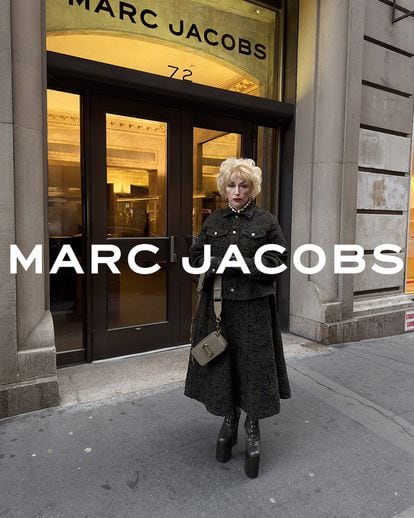At the end of last January, Highsnobiety published a new installment of its New Luxury's New Rules Report. The fifth since the once alternative webzine – a kind of The Business of Fashion of streetwear—based in Berlin repositioned itself as a consultancy and electronic store, in 2019, going on to play in the major commercial leagues (so much so that, a couple of years ago, the mega sales portal Zalando pulled its checkbook to become its majority shareholder ). The report in question is presented as a “barometer of the cultural paths” of the business, that is, a study that looks forward to those factors that, beyond the socioeconomic and political situations, also influence the future of the market and habits. shopping. How does he do it? Pressing the opinion of what he calls “cultural pioneers”, a terminology coined by Edward Campbell, director of the American branch of the platform eager to impress analysts of the Boston Consulting Group, to define that type of luxury consumer, under 35 years old, who values the experience over the product, “integrating it among their hobbies, such as music or sports, thus becoming part of the process of building their identity.” ”. The fact is that of the thousand members of this new intelligentsia of fashion consulted in the last survey, 63% say that they have been refining their tastes, which are increasingly niche, while 71% assure that they like nothing more than recognizing aesthetic-cultural references that appeal directly to such inclinations in brand narratives.
“Today, the codes and stories that a firm launches into the world through its articles, campaigns, images and digital content are no longer perceived or interpreted for what they are, but rather are adopted and reinterpreted based on the interests of each person. , individual or common, creating its own universe of references – expressed in moodboards and memes to share – that are beyond the control of the firm,” the marketing experts proclaim. It is, of course, the consequence of the cultural fragmentation/atomization imposed by social networks. The proliferation of styles or trends compacted in a thematic plan would be the most evident result of such a phenomenon, of the cottagecore (coquettish ruralism) grannycostalcore (styling for an older woman with a second home on the beach), passing through the vanilla girl (femininity in neutral tones that advanced that of silent luxury). See what happened with the most fashionable Gothic style of boarding school for young ladies known as dark academia and moccasins. Monolith from Prada: complement to the autumn-winter 2019-2020 collection, a first reading decoded them as part of the starter pack of the 90's Babywith its Cher Horowitz vibes in Fuera de onda (1995), to later move on to the imagery of that emo twist to college clothing preppy (Wednesday Addams' shoes in the Netflix series helped the new context), without the Italian firm's proposal being anything like that.
Absolutely unaware of what is happening, the system and its agents have lacked time to take action on the matter, maneuvering in an attempt to redirect the situation and regain control of the narrative (making people believe the opposite so as not to scare away the smartest in the class). He crux The question involves pressing the specific key that clicks on the psychological mechanism of response to the product, collection or mere image to be marketed, appealing to emotions, awakening the feeling of complicity. Jonathan Anderson has emerged as a master in that sense, a specialist in truffle his creations with cultural nods to connaisseurs. Hours before the presentation of the autumn-winter 2024-2025 collection of his label, JW Anderson, the Northern Irish designer uploaded a still from the film to his Instagram account Eyes Wide Shutby Stanley Kubrick. The promised sexual tension was later fulfilled in the parade, with the sensual details of the paintings by Christiane Kubrick, the filmmaker's wife, either splashing the scenery or as a print. The wave of instant satisfaction/gratification—expressed via In this case, Anderson had already tested the strategy before in his brand's autumn-winter 2023-24 proposal, which referred to the work of Scottish choreographer and dancer Michael Clark (a collaborator at one time with Leigh Bowery and Alexander McQueen), and in Loewe's spring-summer 2023, with that pixelated silhouette whose symbolism only fans of the video game Minecraft could guess.

That “he who knows, knows” resonates, in effect, as a dominant note in the most recent fashion messages, full of cultural Easter eggs that make their direct recipients feel special without prejudice to those who are not going to get the hang of it. . There are a thousand and one references for coffee lovers, and they are everywhere. They are Diana Ross and Cindy Sherman championing the season's campaigns for Saint Laurent and Marc Jacobs, respectively. They are the piled pillows, the tailcoat jackets with underwear and homoeroticism college Edwardian that refer to the story The story of a panic by EM Forster, the author of Maurice either A room with a view, in the autumn-winter 2024-25 collection of the SS Daley brand staged at the last Pitti Uomo show in Florence. They are the gynoid pin-ups of the Japanese cartoonist Hajime Sorayama that went hand in hand with the robotic autumn-winter 1995 haute couture by Thierry Mugler with which Law Roach and Zendaya spent the game at the London premiere of Dune 2. It is even the British realness served with irony by Daniel Lee in his debut at Burberry, with that wool hat in the shape of a duck, the demand of expert hunters. Although for a paroxysm of references, an exemplary niche is that of the latest Artisanal collection by Maison Margiela, a treatise on the Apache gangster subculture of Paris at the beginning of the 20th century that even reaches the celebrated makeup of Pat McGrath. Can't be more specific
#Kubrick #Foster #Cindy #Sherman #fashion #filled #winks #39culturalists39
